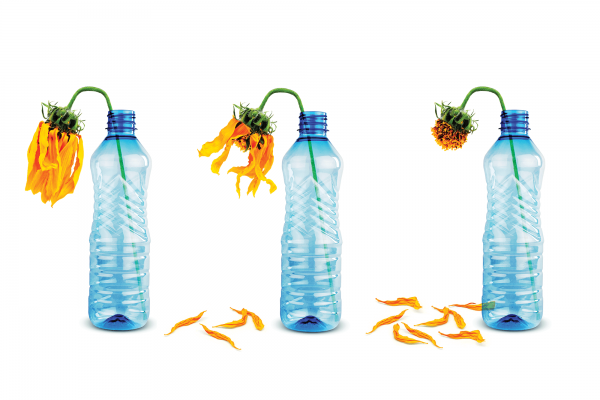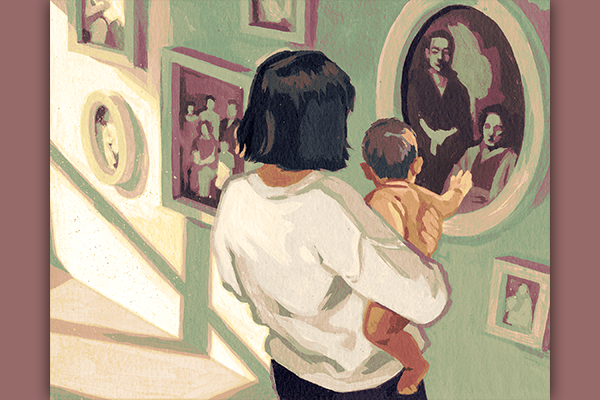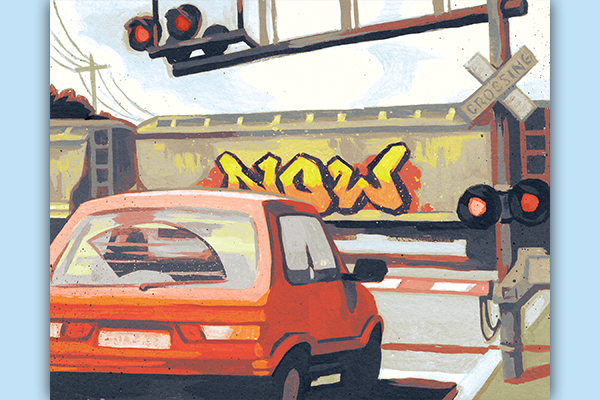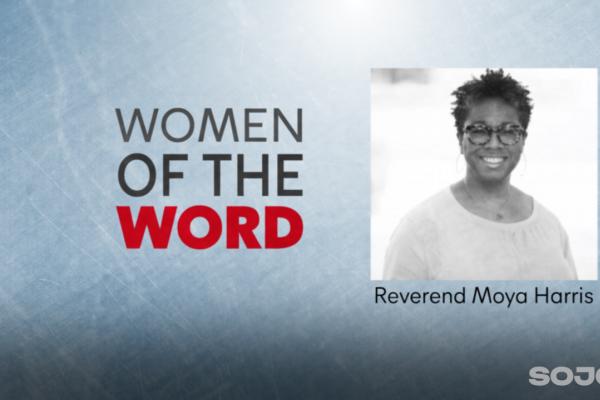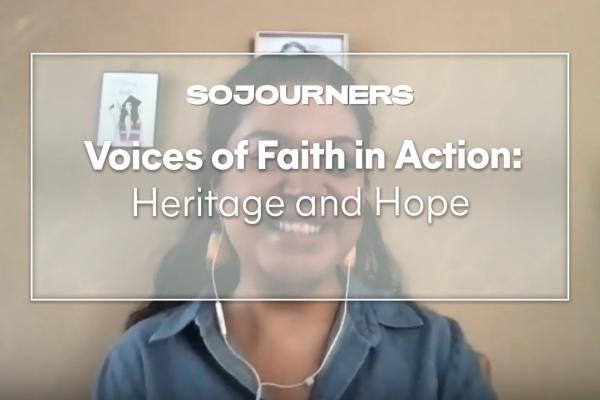SOMEHOW, THE CULTURAL narrative around plastics has collapsed into a story of unfortunate sea creatures with their little bellies full of plastic. As an only child who grew up living aboard a sailboat, these sea creatures are my family and the ocean is my home. I devoted my dissertation research to studying how some types of plastic marine debris concentrate methyl mercury. I crewed on a short research trip to Baja California with Capt. Charles Moore of the Algalita Marine Research Foundation, who was the first to bring attention to the Pacific “garbage patch.” I helped dissect a juvenile black-footed albatross and counted the bits of plastic in its majestic body.
I, too, feel the urgency to keep plastics out of the oceans at all costs, but I fear that there is another story that is not being told.
Disposable plastic is toxic not only to the body but also to the soul. The more we normalize short-term utility as the main criterion for evaluating the things around us, the more disconnected we become from a sense of the inherent worth of creation. The more we cultivate this habit of the heart of seeing things as disposable once they no longer serve us, the less able we are to find the beauty and value in our relationships with each other, or even the intrinsic value in ourselves once we are no longer “productive.”
Plastic’s circular economy
WHEN WE ASK, “Does this spark joy?” what if we also ask whether it “sparks joy” for the workers who make it?
Certain diseases are found almost exclusively in workers involved in the production of vinyl (polyvinyl chloride, or PVC). One is angiosarcoma (cancer) of the liver. Another is occupational acroosteolysis, a painful condition in which the bones in the fingertips break down and the minerals are reabsorbed. Thus, in a sad twist of irony, these workers are more likely to need the PVC IV tubing, PVC catheters, and PVC feeding tubes that they helped create, and they are more likely to spend time confined in hospitals, staring at vinyl walls and vinyl floors and vinyl windows.
Industry spokespeople reassure us that the levels that workers are exposed to today are much lower than they were when these links were established, but I am not sure that is true in China or in other emerging economies where much of our plastic originates.
The building blocks of PVC are derived from oil or gas. In another strange twist, tiny particles of plastic and plastic-coated sand are often used in the fracking process for extracting natural gas, some of which will then become more plastic. This is not what I mean when I advocate for a “circular economy.”
Fracking is contentious. Each pound of conventional plastic costs 22 gallons of fresh water. The amount of water required in routine fracking operations, by some estimates, is up to 9.6 million gallons per well. That does not include spills or seepage into the water table that obligates local residents to drink from yet more plastic bottles.
Equally concerning is evidence that the glut of natural gas, touted as a “bridge fuel” to a clean energy future, may lock us into a plastic future. Fracked gas production surged more than fifteenfold from 2000 to 2018, according to recent research by Food and Water Watch. The glut of natural gas has driven prices to their lowest levels in decades. Three industries have stepped in to capitalize on the low gas prices: natural-gas-fired power plants, gas exporters, and petrochemical and plastics corporations. “Industry experts project that the plastics industry will have added 28 million tons of plastic production between 2011 and 2020, and more than $202 billion is slated to be invested in 333 new facilities and expansions to take advantage of fracked gas,” according to “The Fracking Endgame,” by Food and Water Watch.
Of course, many of these uses of water and fracked gas also produce air pollution, not to mention noise pollution and light pollution that lead migrating birds astray. Invisible to most of us as we hold a plastic bottle are the cancer-causing and hormone-disrupting chemicals that flow downstream from a frack and the grief of families experiencing miscarriages, birth defects, and infertility attributed to these exposures. Most of us do not see the tears of the bereaved families of workers suffocated by “sour gas” (hydrogen sulfide).
Is recycling a hoax?
I WAS LED to believe that I could atone for all this by throwing my plastic into a blue bin when I was done with it. According to industry, if only we had better blue bin collection systems and more conscientious and “educated” consumers, we would not have to think about source reduction. That is a tempting idea, but is it true?
No. Recycling as it is practiced now does very little to decrease the production of new plastic. Even worse, the existence of the current recycling system conditions us to accept a disposable culture.
Japan claims to recycle up to 86 percent of its plastic, but that statistic includes so-called “thermal recycling.” Also known as energy recovery and waste-to-energy, this just means that the heat energy produced by incinerating the trash is captured and reused. But where will the toxic ash and the spent smokestack filter end up?
One consistent feature of disposable culture is that it moves more and more poisons into the bodies of people who are socially vulnerable. This sort of analysis is what environmental justice activists have been doing at least since the United Church of Christ’s Commission for Racial Justice published Toxic Wastes and Race in the United States in 1987. The situation was not much better in Toxic Wastes and Race at Twenty in 2007.
An environmental justice lens asks, “Who benefits from this action, and who is harmed (or who bears the risk of being harmed)?” What happens when we ask these questions about plastics recycling?
Who benefits from recycling? Plastics manufacturers.
Industry publicly frames the plastics problem as one of “mismanagement” of waste. I can’t help but wonder, though, if the real problem for them is how to make us feel better about what we are doing to each other and to the planet. Plastics manufacturers need us to feel good—or at least neutral—about their products so we keep buying them. Enter “guilt-free packaging.”
The “astroturf” group that since 1953 has been promoting pro-recycling and anti-litter “public service” messages is called Keep America Beautiful. Funded by the beverage and packaging industries (and cigarette manufacturer Philip Morris, whose single-use plastic filters are a significant pollutant), KAB fights hard against government regulations that would shift responsibility from consumers back to producers. Today, however, the way we “keep America beautiful” is by sending our trash overseas, in big shipping containers labeled “recycling.”
The 1989 Basel Convention on the Control of Transboundary Movements of Hazardous Wastes and their Disposal is an international treaty among 186 countries and the European Union that regulates the export of toxic waste from wealthy to under-resourced countries. It was amended in May 2019 to specifically prohibit shipments of plastics for “recycling” to non-OECD (Organization for Economic Cooperation and Development) nations. The U.S., however, has yet to ratify the Basel Convention and therefore is not a party to it.
Once the shipments are unpacked abroad, workers (often children) sort through it in search of the bits that can be resold. Given that it is usually less expensive for companies to use new plastic than recycled, there is not a good living to be had in these bales. What cannot be resold is often burned in smoldering, open-air piles.
The lower the temperature of the fire, the more toxic the substances created. State-of-the-art pyrolysis facilities maintain their burn at 1,100 degrees Celsius. Informal burn piles may only reach 600 to 1,000 degrees Celsius. At these temperatures, PVC readily forms dioxins.
To distance ourselves even further from all of this, we scapegoat. The American Council on Science and Health (which counts among its major donors the Koch and Scaife families, Exxon Mobil, and McDonald’s) has published an article on plastics that reassures U.S. readers, “You aren’t the problem. Asia is.”
I don’t want to Keep America Beautiful if that means burying other countries in our trash. I want to Keep the Whole Planet Beautiful. Recently, some waste haulers have pledged to keep our trash local, by which they mean confined to North America. Time will tell whether this is a move toward environmental justice or simply a change in the scenery around the brown and black people who will be sorting through my garbage.
Reducing waste at the source is obviously the ideal solution, yet even my community-supported agriculture farm share box (the waxed cardboard one that I reuse every week) sometimes arrives with loose greens in plastic bags. I want out of this system. But how?
How to invest in sustainable relationships
BACK IN 2012, I thought I had the answer. I moved to Dancing Rabbit Eco-Village, in the Missouri prairie, with the intention of living entirely without plastic. I thought I could build a cob or straw-bale tiny house and survive on unpackaged foods grown in our village and on surrounding farms.
Then it dawned on me. The plastic was still there, upstream. Just as the workers poisoned by the plastics they create were invisible to me, so was the plastic itself. When I picked up my bunches of loose greens and put them ever so sanctimoniously in my cloth bag, I didn’t have to look at the sheets of polyethylene that covered the field to keep weeds in check or the polycarbonate panels that kept the greenhouse warm in winter so that I could eat extended-season vegetables.
I realized that opting myself out of the system was not enough. The whole system must change. And not just one plastic straw at a time.
Transforming disposable culture is not just a matter of substituting the latest bioplastic, compostable version of a throwaway item. It is about changing our cultural narratives so that our decisions are not based solely on what is convenient for ourselves but on what is life-giving for all of us. It is as much about investing in sustainable relationships, both at the interpersonal and international levels, as it is about sustainable packaging.
I experiment with culture-shifting in the classes I teach. I invite my students to pick up a piece of litter on their way to class, then take it home and put it in an honored place in their room. I ask them to contemplate the garbage until they are able to see its beauty. I challenge them to find a new purpose for it.
Of course, picking up one piece of litter won’t change our cityscape. But it can transform us.
Some students find emotions surfacing that they were not expecting, such as a deep longing for reconciliation with estranged loved ones. If you are skeptical about the connection between throwing away a “to go” cup and throwing away a relationship, I urge you to try it for yourself.
I have adopted a spiritual practice of not using disposables when I can help it. Instead of thinking that I can separate myself from the symbolic and actual messiness, I strive to cultivate a habit of the heart of seeing God’s creation as worth holding on to. Every time I pull out my stainless-steel camping plate, metal straw, bamboo cutlery, or metal water bottle, I remember that I am washed and made clean, too. There are so many ways throughout the day to silently thank God for not giving up on me, and for embodying not only second chances but 70 times 70 reuses.
Of course, it will never be complete. Personally, I draw the line at reusable wipes instead of toilet paper. You get to draw that line where it makes sense for you. I find that the act of noticing itself is a useful sort of mindfulness. Do I really need this? Where are my options constrained, and why? I also ask myself whose hands have touched the things that now serve me. Were they enriched or diminished by their encounter with this object? Will it make our common home more generative?
I want to see the world through God’s eyes. All of this helps me remember that everything is sacred. I am not reducing my use of plastics only to safeguard my own health. This is also for the unfortunate sea creatures with their bellies full of plastic. It is for the Indigenous nations whose water is threatened by natural gas pipelines. It is for the vinyl chloride workers who can no longer feel their fingers. And it is for everyone who has ever been used. With every “convenience” I decline, I affirm our belovedness, our interdependence.
I refuse to be refuse.

Got something to say about what you're reading? We value your feedback!
